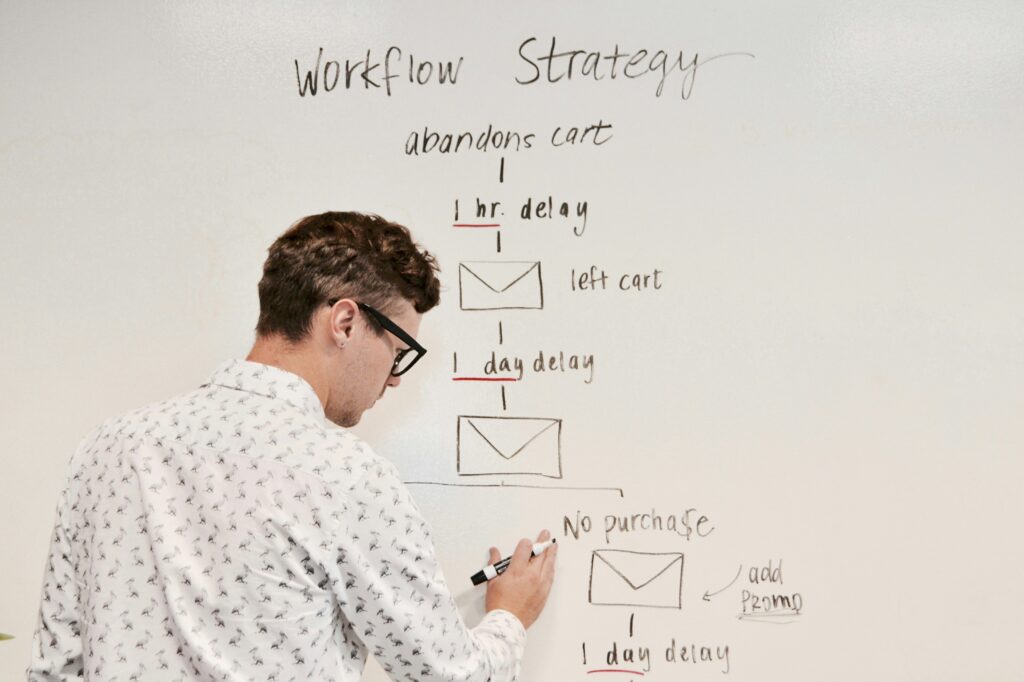Why Scaling Is More Than Just Growth
Growth means doing more. Scaling means doing more with less friction. When a business grows, it adds resources—more staff, more tools, more systems—to handle increased demand. That’s fine for a while. But true scaling? It’s about expanding impact and revenue without the overhead ballooning in sync.
Scaling is cleaner. It’s optimized. A scaled business doesn’t just survive a spike; it handles it without skipping a beat.
So when’s the right time to scale? Simple: when the core of your business is sturdier than the volume it’s currently managing. If you’re scrambling to fulfill orders, or your team can’t keep up, it’s not time. But if systems are running smoothly, if demand is exceeding current capacity, and if you’ve got repeatability built into your operations—that’s your green light.
Here are some signals it may be time:
- You’re hitting (or exceeding) revenue goals consistently
- Customers are coming through word of mouth or organic channels
- Processes are documented, and the team doesn’t rely on any one person to function
- You’ve found product-market fit—and demand isn’t slowing down
Scaling too early stretches an already fragile foundation. Scaling too late means missed opportunity. Get the timing right, and growth stops being guesswork—it becomes inevitable.
Strategy 1: Systemize Before You Multiply
Growth without systems is chaos with a bigger budget. The first step to scaling is getting clear on what you do over and over again—and doing it the same way every time. Whether it’s onboarding a new client, publishing content, or handling support tickets, anything repeatable should be documented.
This is where Standard Operating Procedures (SOPs) come in. SOPs aren’t red tape—they’re playbooks. They cut down errors, reduce your team’s dependency on any single person, and make delegation cleaner. They also let you scale quality right along with quantity.
Once the systems are in place, the next tier is smart automation. Use tools like Notion, Zapier, and Make to connect workflows without losing human oversight. Automate the handoffs, not the heart of the work. The goal isn’t going full robot—it’s about keeping the gears turning while you focus on the heavy decisions.
Systematize first. Multiply second. That’s how you win the long game.
Strategy 2: Hire for Where You’re Going (Not Where You Are)
Scaling without strategic hiring is like racing a car with flat tires: you might move, but you’re not going anywhere fast. Far too many startups fall into the trap of reactive hiring—scrambling to fill roles when things start breaking. It’s messy, expensive, and rarely brings in the right people.
Strategic hiring flips the script. Instead of asking, “Who do we need now?”, you ask, “Who will we need two quarters from now if this trajectory holds?” This approach helps you build a team with the bandwidth and mindset to scale—not just patch holes in the present.
But skills aren’t enough. In fast-moving environments, cultural fit is a dealbreaker. You need people who thrive in ambiguity, take ownership without hand-holding, and hit the ground running. When your business is scaling fast, friction from bad hires multiplies. Clarity, alignment, and shared pace are essential.
Bottom line: build the team today that can carry the company you’ll be six months from now. Guess wrong, and you’ll be busy cleaning up. Guess right, and you’ll spend your time growing instead of fixing.
Strategy 3: Delegate or Die
If you’re trying to scale and you’re still knee-deep in every decision, you’re the bottleneck. One of the most critical mind shifts for any founder is moving from doer to builder. That starts with knowing the difference between high-leverage tasks—the things only you can do to drive growth—and drain tasks that burn time but barely move the needle. Hint: if someone else could do it 80% as well, it’s probably a drain task.
Delegation is more than handing off grunt work. It’s about building leaders inside your company. That intern who asks good questions? Mentor them. The ops manager who’s crushing systems? Give them room to lead a project. Scaling isn’t just external growth—it’s internal maturity. Teams that can operate without you are what allow a company to grow past its founder-shaped ceiling.
Letting go is hard, but necessary. Many founders get stuck doing too much for too long. Trust becomes your growth currency. If you can’t hand off control, you can’t scale. Period.
More on this: Mastering the Art of Delegation for Business Expansion
Strategy 4: Scale What Works, Ditch What Doesn’t
Start with what’s already showing results. Too many businesses try to scale by chasing shiny objects—new channels, untested ideas, buzzwords wrapped in pitch decks. The smarter move? Go all-in on what’s already converting. If one ad channel brings in 80% of your customer base, double down. Improve your landing pages. Refine targeting. Get sharper, not broader.
Next: slash expenses that don’t scale with value. Fancy tools, bloated marketing tech stacks, inefficient partners—cut them. If it doesn’t generate ROI, it doesn’t belong in a scale-up phase. Every dollar spent should have a role in moving the needle.
Finally, stop making gut calls when you don’t have to. Instinct is great, but data is better. Use real numbers to guide budget allocation, content creation, and customer targeting. Let your CRM, analytics dashboards, and A/B tests lead.
Scaling isn’t about throwing fuel everywhere. It’s about knowing where the fire is—and feeding it with precision.
Strategy 5: Build Resilience Into the Foundation
Scaling without a financial or operational backbone is a quick route to collapse. First up: know your cash runway like your own pulse. How many months can the business operate if revenue flatlines tomorrow? That number matters more than almost any metric during a scale-up. Pair that with ruthless clarity on burn rate—what you’re spending monthly and what truly moves the business forward.
Then there’s infrastructure. Don’t wait for systems to snap under pressure. Before demand spikes, invest in tech that streamlines operations, support teams that don’t melt under customer volume, and supply chains with backup plans. Think boring logistics, not just cool product launches—because infrastructure issues don’t trend, but they do kill momentum.
And finally, watch for the silent killer: success that comes too fast and unprepared. It’s easy to grab a window of growth, but harder to hold it. Businesses that survive sudden growth do so because they prepared to be overwhelmed. They built clarity into their chaos.
In short: scale like you expect things to break—and set it up so they don’t.
Scaling Pitfalls to Avoid
Some of the most common mistakes in fast scaling come down to impatience masked as ambition.
First, overhiring before tightening operations is a classic misstep. More hands don’t fix broken systems. If your workflows are messy, adding new people just multiplies confusion. Hire smart, not fast, and only after you’ve built solid foundations.
Then there’s the mistake of investing too early in markets you barely understand. Scaling into fresh territory feels exciting—but without tested demand or local insights, it’s more like gambling. Start lean, test assumptions, and prove value before going big.
And maybe the most dangerous: drifting away from your core product during expansion. Features, spin-offs, and side projects can pull your focus if you’re not careful. Remember what got you traction in the first place. Improve it. Protect it. Scale it with intention.
Avoiding these traps requires discipline. Growth is good. Sustainable growth is better.
Final Word
Scaling fast sounds sexy. But ask anyone who’s been through it—it’s also stressful, chaotic, and brutally exposing. The businesses that pull it off aren’t just running harder. They’re built stronger from the inside out. Structural strength—the quiet backbone of fast-moving companies—is what keeps the walls from cracking when the pace accelerates.
But strength alone isn’t enough. Your mission—why you started—has to stay front and center. Growth brings noise, complexity, and shiny distractions. Staying mission-driven keeps the team aligned and the product grounded.
And then there’s the execution piece. You’re either adapting in real time or falling behind. No time for perfection. Quick tests, fast feedback, and relentless execution—that’s what separates startups that scale from those that stall. Fast isn’t just a tempo. It’s a mindset, and it needs to be sharp, not sloppy.


